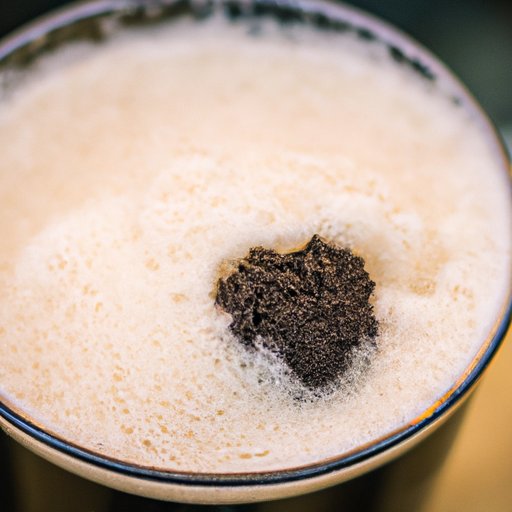Introduction
Beer is one of the most beloved beverages in the world. From light pilsners to dark stouts, the variety of beer flavors and styles can seem endless. But what exactly is beer made of, and how do those ingredients come together to create such a delicious drink? Understanding the essential ingredients and brewing process of beer can deepen our appreciation for this beloved beverage and help us choose the best beers to try.
In this article, we’ll explore the key ingredients that make up beer, the variations in the brewing process due to geographical and cultural factors, the chemistry behind the beer-making process, the environmental impact of beer production, and the differences between macro and microbrews.
A History and Breakdown of Beer’s Essential Ingredients
The four main ingredients in beer are hops, malted barley, yeast, and water. These ingredients have been used in beer making for centuries, and each plays a distinct role in the brewing process.
Hops are the flowers of the hop plant, and they’re used to give beer its distinctive bitterness and aroma. When hops are added to boiling wort (unfermented beer), they release alpha acids, which balance out the sweetness of the malted barley.
Malted barley is barley that has undergone a process of sprouting and drying, which activates enzymes that break down starches into sugars. These sugars are what yeast feeds on during fermentation, and they also give beer its body, flavor, and color.
Yeast is a microorganism that eats sugar and produces alcohol and carbon dioxide as byproducts. There are many different strains of yeast used in beer making, each imparting its own unique flavor profile to the beer.
Water is the most abundant ingredient in beer, making up over 90% of the final product. The mineral content and pH of the water used can greatly impact the flavor and quality of the beer.
Variations in Beer-making Process Depending on Geographical and Cultural Factors
The beer-making process can vary greatly depending on where it’s being made and the cultural traditions surrounding it. For example, Belgian brewers often use spices and fruit in their beers, while Czech brewers prioritize bitterness and clarity in their pilsners.
In addition, brewers may use adjuncts (non-barley ingredients) or secondary ingredients to add flavor and complexity to their beers. Examples of adjuncts include corn, rice, and wheat, while secondary ingredients can range from coffee and chocolate to nuts and fruit.
It’s also important to note that the geography of the location where the beer is made can impact the brewing process. For example, English brewers traditionally use hard water, which contains high levels of minerals that create a distinct flavor in their beers.
The Chemistry of Beer Ingredients
The interaction between enzymes and chemical compounds during the brewing process is what creates the unique flavor and character of beer. For example, alpha amylase breaks down the complex starches in malted barley into simple sugars, while beta amylase breaks down the simpler carbohydrates into even simpler sugars.
Temperature and pH also play a crucial role in the brewing process. Too high or too low of a temperature can kill yeast or prevent enzymes from working properly, while the pH of the water can impact the solubility of compounds like alpha acids.
Making beer requires precise measurements and attention to detail in order to create a consistent and high-quality final product.
Environmental Impact of Beer Production
While beer production is a global industry with a wide range of environmental impact, some breweries are making efforts to prioritize sustainability. One of the biggest environmental issues in beer production is water usage – one pint of beer can require up to 20 gallons of water to produce.
Breweries are taking steps to reduce their water usage, such as using recirculating systems to reuse water or investing in water-saving technology. Some breweries are also prioritizing the use of locally-sourced ingredients to reduce the carbon emissions associated with transportation.
Macro vs. Microbrews
Macrobrews are beers produced by large corporations like Anheuser-Busch and MillerCoors, while microbrews come from small, independent breweries. One of the most significant differences between the two is the level of control over the brewing process – macrobrews are often mass-produced and standardized, while microbrews prioritize small-batch brewing and experimentation with different ingredients and flavors.
The brewing techniques used by macro and microbrewers can have a significant impact on the final product. For example, some craft brewers use “dry hopping” – adding hops after fermentation – to add a more complex aroma and flavor profile to their beers.
Conclusion
Understanding what beer is made of and how it’s made can give us a deeper appreciation for this beloved beverage. From the essential ingredients of hops, malted barley, yeast, and water to the variations in brewing techniques due to cultural traditions and geographic locations, there’s a wealth of knowledge to explore in the world of beer-making.
Whether you’re a dedicated beer enthusiast or a casual drinker, exploring different types of beer and the ingredients and brewing methods that create them can be a fun and informative journey.
